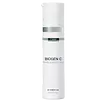What's inside
What's inside
 Key Ingredients
Key Ingredients

 Benefits
Benefits

 Concerns
Concerns

 Ingredients Side-by-side
Ingredients Side-by-side

Water
Skin ConditioningTocopheryl Acetate
AntioxidantGlycerin
HumectantCarthamus Tinctorius Seed Oil
MaskingCetyl Alcohol
EmollientStearic Acid
CleansingGlyceryl Stearate
EmollientPersea Gratissima Oil
Skin ConditioningSesamum Indicum Seed Oil
EmollientHelianthus Annuus Seedcake
AbrasiveErigeron Annuus Flower Oil
Skin ConditioningPanthenol
Skin ConditioningAloe Barbadensis Leaf Juice
Skin ConditioningAllantoin
Skin ConditioningCetearyl Glucoside
EmulsifyingGlyceryl Stearate Se
EmulsifyingGlyceryl Stearate Citrate
EmollientPolysorbate 60
EmulsifyingSodium Hydroxide
BufferingPhenoxyethanol
PreservativeEthylhexylglycerin
Skin ConditioningParfum
MaskingWater, Tocopheryl Acetate, Glycerin, Carthamus Tinctorius Seed Oil, Cetyl Alcohol, Stearic Acid, Glyceryl Stearate, Persea Gratissima Oil, Sesamum Indicum Seed Oil, Helianthus Annuus Seedcake, Erigeron Annuus Flower Oil, Panthenol, Aloe Barbadensis Leaf Juice, Allantoin, Cetearyl Glucoside, Glyceryl Stearate Se, Glyceryl Stearate Citrate, Polysorbate 60, Sodium Hydroxide, Phenoxyethanol, Ethylhexylglycerin, Parfum
Water
Skin ConditioningStearic Acid
CleansingOleic Acid
EmollientGlycerin
HumectantDimethyl Isosorbide
Solvent3-O-Ethyl Ascorbic Acid
Skin ConditioningKrameria Triandra Root Extract
Skin ConditioningGlycine Soja Oil
EmollientCarthamus Tinctorius Seed Oil
MaskingPolyglyceryl-6 Distearate
EmulsifyingTocopheryl Acetate
AntioxidantGlyceryl Stearate Citrate
EmollientPolyglyceryl-3 Stearate
EmulsifyingEucalyptus Globulus Leaf Oil
PerfumingHydrogenated Lecithin
EmulsifyingHexapeptide-11
Skin ConditioningLaminaria Digitata Extract
Skin ProtectingJojoba Esters
EmollientPolyglyceryl-3 Beeswax
EmulsifyingCetyl Alcohol
EmollientChloroxylenol
AntimicrobialCI 42090
Cosmetic ColorantLimonene
PerfumingWater, Stearic Acid, Oleic Acid, Glycerin, Dimethyl Isosorbide, 3-O-Ethyl Ascorbic Acid, Krameria Triandra Root Extract, Glycine Soja Oil, Carthamus Tinctorius Seed Oil, Polyglyceryl-6 Distearate, Tocopheryl Acetate, Glyceryl Stearate Citrate, Polyglyceryl-3 Stearate, Eucalyptus Globulus Leaf Oil, Hydrogenated Lecithin, Hexapeptide-11, Laminaria Digitata Extract, Jojoba Esters, Polyglyceryl-3 Beeswax, Cetyl Alcohol, Chloroxylenol, CI 42090, Limonene
Ingredients Explained
These ingredients are found in both products.
Ingredients higher up in an ingredient list are typically present in a larger amount.
Carthamus tinctorius seed oil comes from safflower, one of humanity's oldest crops.
Safflower seed oil contains a high percentage of linoleic acid and oleic acid. It also contains Vitamin E. These three components are effective moisturizers.
Vitamin E helps nourish your skin's lipid barrier. It is also a potent antioxidant. Antioxidants help fight free-radical molecules, or unstable molecules that may damage your skin cells.
Due to its high fatty acid content, this ingredient may not be malassezia folliculitis safe.
Thoughout history, safflower has been used for dying fabrics and in food as a saffron substitute.
Learn more about Carthamus Tinctorius Seed OilCetyl Alcohol is a fatty alcohol. Fatty Alcohols are most often used as an emollient or to thicken a product.
Its main roles are:
Though it has "alcohol" in the name, it is not related to denatured alcohol or ethyl alcohol.
The FDA allows products labeled "alcohol-free" to have fatty alcohols.
Learn more about Cetyl AlcoholGlycerin is already naturally found in your skin. It helps moisturize and protect your skin.
A study from 2016 found glycerin to be more effective as a humectant than AHAs and hyaluronic acid.
As a humectant, it helps the skin stay hydrated by pulling moisture to your skin. The low molecular weight of glycerin allows it to pull moisture into the deeper layers of your skin.
Hydrated skin improves your skin barrier; Your skin barrier helps protect against irritants and bacteria.
Glycerin has also been found to have antimicrobial and antiviral properties. Due to these properties, glycerin is often used in wound and burn treatments.
In cosmetics, glycerin is usually derived from plants such as soybean or palm. However, it can also be sourced from animals, such as tallow or animal fat.
This ingredient is organic, colorless, odorless, and non-toxic.
Glycerin is the name for this ingredient in American English. British English uses Glycerol/Glycerine.
Learn more about GlycerinGlyceryl Stearate Citrate is a citric acid ester of glyceryl stearate.
It is an emulsifier, emollient, and a surfactant.
Emulsifiers help stabilize a product. It does this by preventing certain ingredients from separating. Common ingredients include oils and water, which do not mix naturally. Emulsifiers have properties that help keep ingredients such as these together.
Emollients help soothe and soften the skin. They do this by creating a protective film on your skin. This barrier helps trap moisture and keeps your skin hydrated. Emollients may be effective at treating dry or itchy skin.
Surfactants help gather oils, dirt, and other pollutants from the skin. This helps them to be easily rinsed away.
Learn more about Glyceryl Stearate CitrateStearic Acid is a fatty acid. It is an emollient, emulsifier, and texture enhancer.
As an emollient, stearic acid helps soften skin. It aids the skin's protective barrier by preventing water loss. It also provides a gentle cleansing effect without stripping away natural oils.
Stearic acid may also be used to enhance the texture of products. It can add volume and stabilize ingredients such as water and oil. This can help water and oil ingredients from separating.
Sources of stearic acid include animal or vegetable fats/oils such as coconut or shea. It can be naturally found in butter, cocoa butter, shea butter, vegetable fats, and animal tallow.
This ingredient may not be Malassezia folliculitis, or fungal-acne safe.
Learn more about Stearic AcidTocopheryl Acetate is AKA Vitamin E. It is an antioxidant and protects your skin from free radicals. Free radicals damage the skin by breaking down collagen.
One study found using Tocopheryl Acetate with Vitamin C decreased the number of sunburned cells.
Tocopheryl Acetate is commonly found in both skincare and dietary supplements.
Learn more about Tocopheryl AcetateWater. It's the most common cosmetic ingredient of all. You'll usually see it at the top of ingredient lists, meaning that it makes up the largest part of the product.
So why is it so popular? Water most often acts as a solvent - this means that it helps dissolve other ingredients into the formulation.
You'll also recognize water as that liquid we all need to stay alive. If you see this, drink a glass of water. Stay hydrated!
Learn more about Water